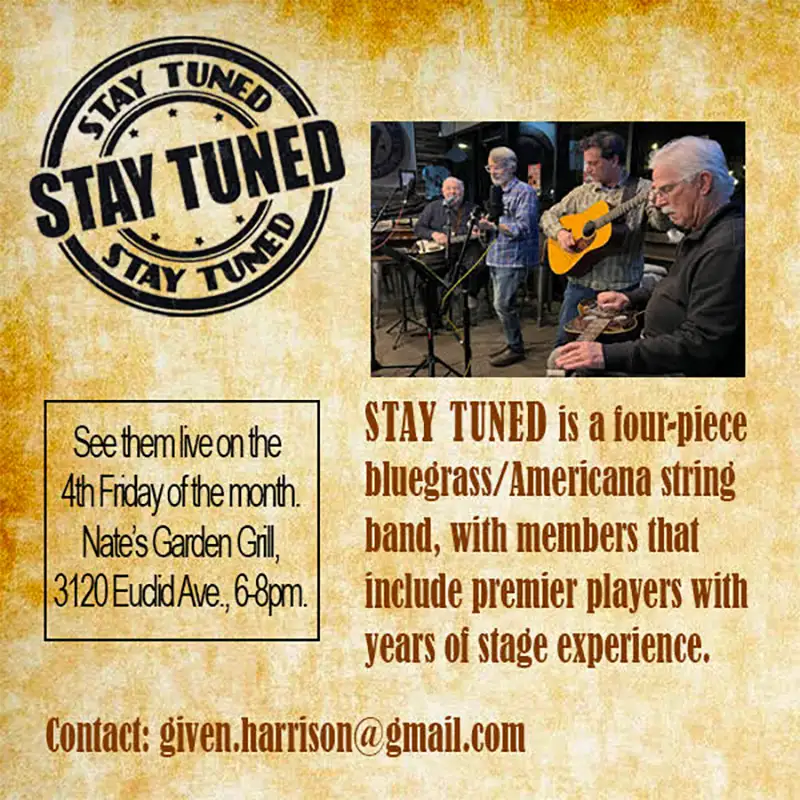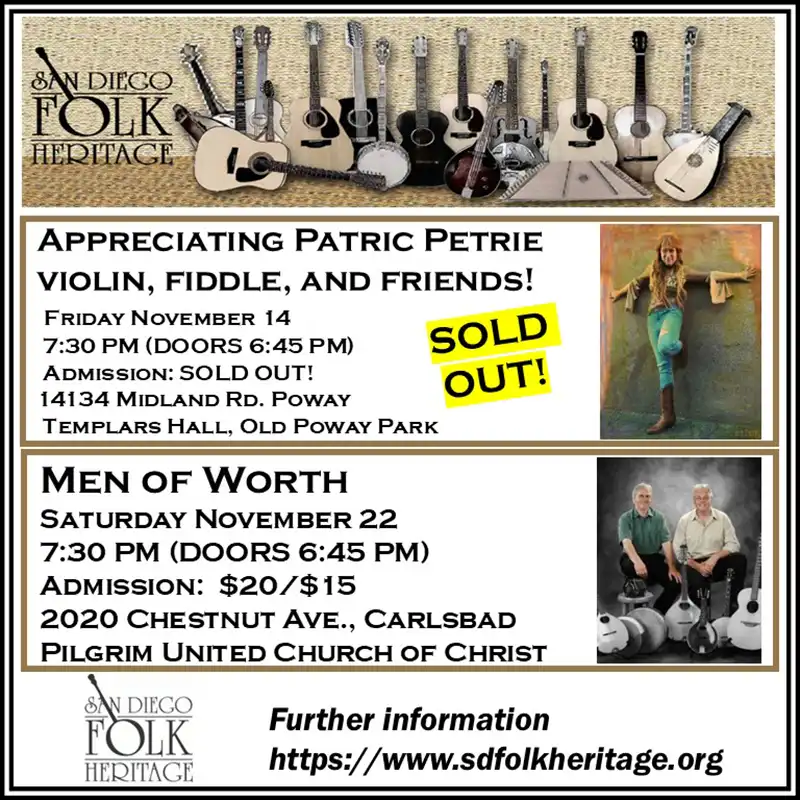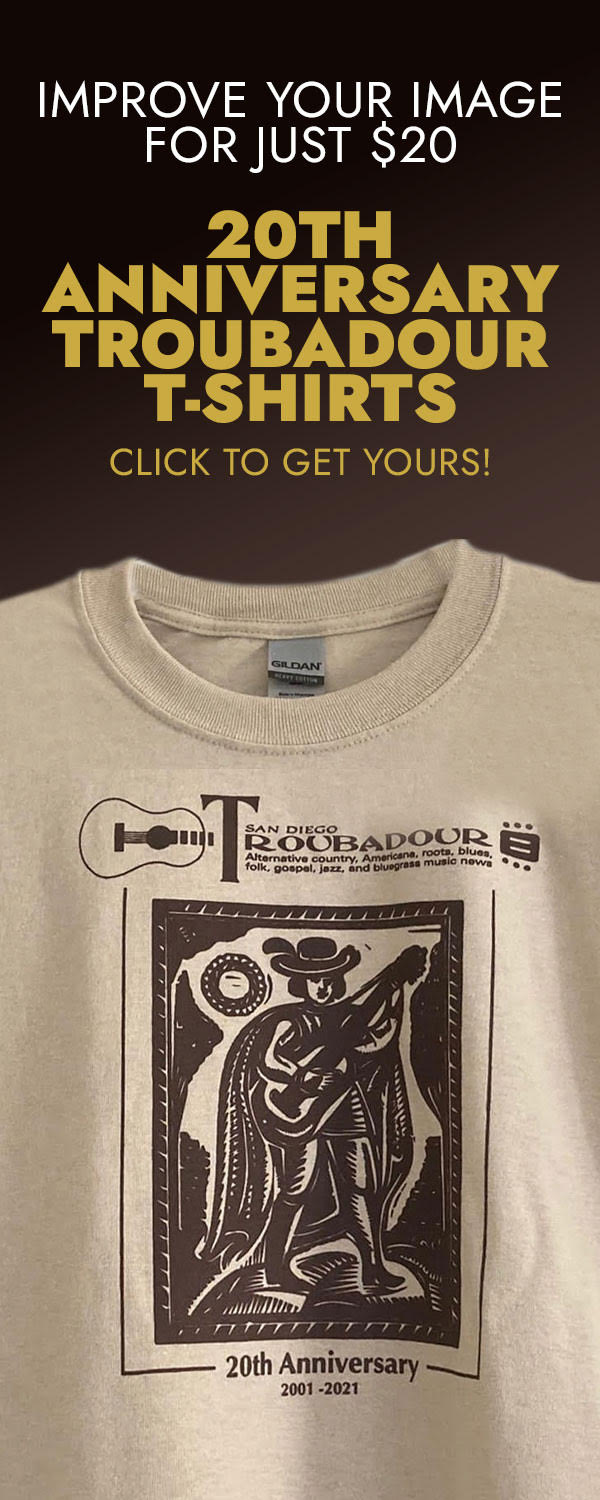Recordially, Lou Curtiss
Some Thoughts on Jazz Roots
I want to apologize to you all who listen to my radio show regularly. The station (KSDS 88.3FM) has been running repeats since late October, citing logistical problems as the reason. We were supposed to go live at the first of the year but I’ve heard nothing from the station in spite of the fact that I’ve got several new shows ready to go. If you are a listener and want to hear new stuff I’d sure appreciate it if you could let KSDS know about it with a phone call, email, or postcard. Thanks!
SOME BOOMERS I HAVE KNOWN
Harry McClintock, also known as Haywire Mac, used to write an occasional column for the old Railroad magazine in the late 1930s. In doing research for the Harry McClintock LP record Mark Wilson and I put together for the Rounder label some 20 or so years ago we ran across several of those old columns and I thought you railroad song collectors might like to hear some of Mac’s thoughts about riding the rails. These thoughts are from 1939.
“Looking backward over the track that has slid under the wheels through the long years, I see many familiar figures in the dim light of switch shanty stoves and a glass of foaming suds. Boomers, all of them. And what a company! There were no angels–neither am I–but today I am proud to recall that I knew those boys long ago and worked with them and rated their friendship.”
There was nothing a boomer wouldn’t do for a friend. Plenty of “brass hats” made fine reputations for themselves and gained coveted promotions because they were smart enough to recognize the value of a boomer’s friendship and to extend him a few favors.
When a boomer was working and you weren’t, you never needed to ask him for a feed. Invariably, he’d ask you first. And he’d stake you to a clean shirt or a suit of underwear or have your shoes half-soled. Or, if you were looking for a job but looked to “trampified,” he’d get your suit pressed and your hat blocked and even borrow a watch for you to have examined when you got the job.
Remember, too, whenever he met you in a strange railroad job he’d always hail you but seldom would call you by name until he had a private word with you. Most boomers had two names–some had as many as a dozen–so it wasn’t a good policy to be over-effusive in your greeting.
There were famous boomers of the old days whose names will be remembered and whose exploits will be recounted as long as we switch engines, go “on the spot” or freight trains wait on delayed meets in lonely sidings.
How many old-timers recall “Circus” Doyle, for instance–Circus Doyle who claimed to have been trainmaster of the first circus train that ever moved regularly by rail? The circus is said to have been John O’Brien’s Consolidated Railroad Shows. I have never checked on this legend, but I do know that among outdoor showmen all over the country a boxcar is still called a “John O’Brien.”
Then there was “Red Shirt” McCarty, whose chief claim to distinction was the fact that he hadn’t worn or even owned a coat in 20 years, attiring himself at all times, on the job and off, in the simple splendor of a red flannel shirt and corduroy pants. But, you ask, “How did he keep warm in winter time?” Didn’t I tell you McCarty was a boomer? He worked on the Jim Hill road or around the head of the lakes in summer and then hit for Galveston or the old Gulfport and Eastern along with the first southward flight of the wild geese. Mac’s weather sense was considered more reliable than the bulletins of the U.S. Weather Bureau. No matter how balmy the Indian Summer days might be or how fair the promise for mild weather, the old timers started digging out the mackinaws and sheepskins when they caught a glimpse of McCarty and his flaming flannels headed south. Usually he’d show up again with the spring’s first robin, which he claimed was Irish and a relative, and proved it by pointing out that the robin also wore a red shirt.
Still there must have been times when Mac got a bit chilly working on the Missabe Range. Old Micky Moran used to claim that the coldest “winter” he ever spent in his life was one summer when he worked in Duluth. However you can’t always tell.
Years ago I was on the sharp end of a Denver-bound drag that was trying to get out of a Laramie yard. There were two or three other freights pointed the same way. After awhile the switch engine that had been blocking the lead shoved to clear, and a Cheyenne drag got the wave from the switch tender. Just about that time the storm curtain on our calliope parted, and in crawled a switchman to bask for a few minutes in front of the boiler head.
It must have been 20 below. One of those “Wyoming zephyrs” blowing, the kind that seems to come straight down and then scatter in all directions when it hits the ground and carries an edge that would make any manufacturer of razor blades ashamed of his product. The switchman was attired in blue serge, well worn and slightly greasy. He had a red bandana knotted around his Adams Apple and a ten-cent pair of ear muffs under the curly brim of his Stetson. On his feet were a pair of ordinary “hen skin” dress shoes, unprotected by galoshes.
“Gee pardner,” our hogger remarked, “you oughta have an overcoat in weather like this.”
“Overcoat?” said the boomer scornfully. “Hell, man, I got underwear!”
Probably the most famous of all the old-timers, as far as switch-shanty legend is concerned, was Hee-Haw Mike. Hee-Haw was a good car hand when he wanted to be. He was also a grade A drinking man, single or double handed, and his real name was McMann, although he rarely worked it. And here is the story that is usually retold in smoke-filled rooms when Hee-Haw’s name is mentioned.
The locale varies according to the narrators imagination. It may have been Duluth or Galveston or Port Arthur Canada: but I am inclined to think that it happened (if at all) in the Espee yards at Mission Bay, San Francisco.
It seems that an engine foreman was switching out a bunch of hot loads for the next car ferry to haul ot Oakland. He cut Hee-Haw off with four or five loads and instructed him to ride ’em down to within four or five car lengths of the ferry slip and to anchor them so as to hold any other cuts that might be kicked down the lead. After 15 or 20 minutes Hee-Haw came strolling back nonchalantly and said in his own inimitable bray:
“You’d better cut me off a few more cars if you want an anchor on the boat lead. That last bunch went in the bay!”
Another character earned the name of Arnica Jack by getting pie-eyed on arnica and wrecking a ward in the Espee hospital, which stood at Fourteenth and Valencia Street in San Francisco before it was destroyed by the fire and earthquake of 1906. Old timers who were patients in that institution might be interested in knowing that the famous old saloon where the convalescents whiled away their time is still in existence. I have forgotten Jack’s real name. He was a French Canadian, usually known as McCoy and he was the original “Coast” defender. It is said he had never been east of Truckee in his life.
Then there were “Sarah” Barnhart, “Broken-nose” McGowan, “Stuttering” Smith, “Ten Day” Murphy, and “Tonapah Dave” Peavy. There were also Park Arnold, “Windy” Wingate, and “Turkey Neck” Clark. All of those boys, to the best of my knowledge, have long since given the “alarm at the outer portal” of the Great Lodge Room upstairs. And you can leave it to any of that bunch to talk his way past the Outer Guard at least.
There are more Boomer Stories from Haywire Mac I’ll be sharing with you next month and in the future. Meanwhile you might want to poke around and see if you can find that old Rounder LP with songs on it like Mac’s original “Big Rock Candy Mountain,” “Hallelujah I’m a Bum,” “Circus Days,” “The Trusty Lariat,” “Billy Venero,” and many others. Tune in next time.
Recordially,
Lou Curtiss








